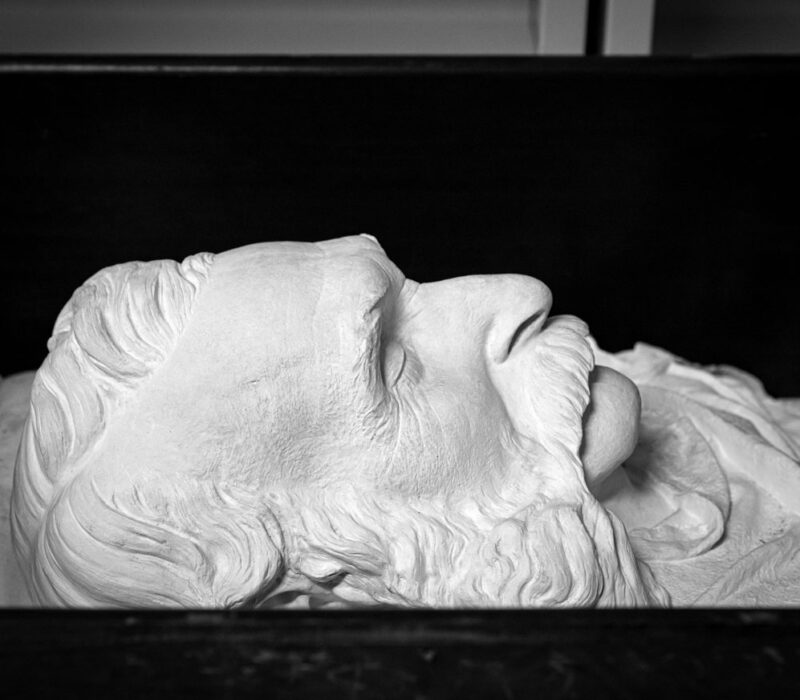Unseen Peddie: The VIP Campus Tour

From the Spring/Summer 2025 Peddie Chronicle
Insiders Only.
Zoom in and squint all you like at a Peddie map, but either you won’t see these places on it or you haven’t heard their whole story. Until now.
Lace up your shoes (real or virtual) and take this self-guided tour through campus, where we spotlight gems hidden in plain sight that reveal some of Peddie’s surprising history, sweet slices of life … and one seriously off-limits door.
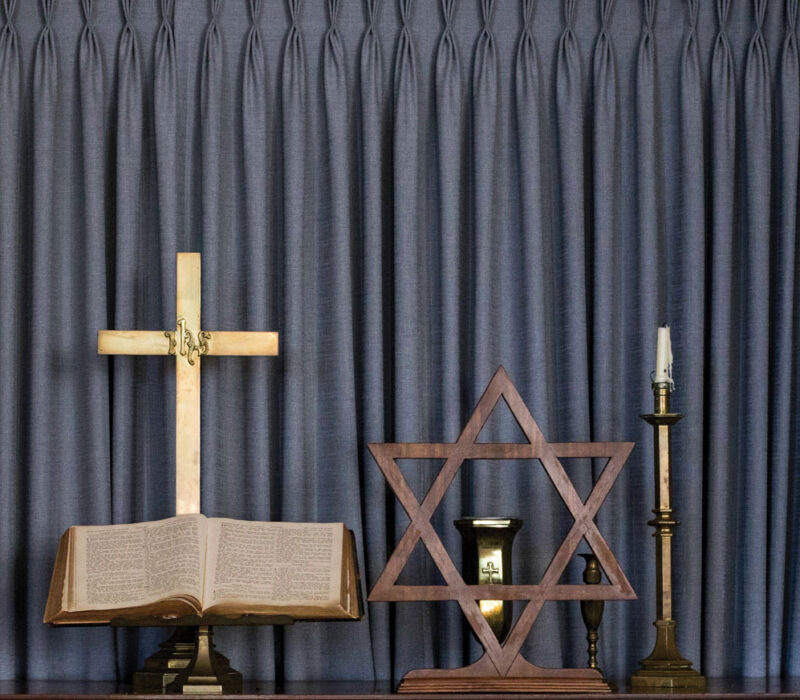
Ayer Memorial Chapel
Symbols on the Altar
Striking representations of faiths, displayed across the back wall, illustrate Peddie’s inclusivity and rich diversity. They include a plaque with the 99 names of Allah (Islam), a wall hanging of Om (Hinduism, Jainism and Buddhism), a Star of David (Judaism), a cross and chalice (Christianity) and a framed Ik Onkar (Sikhism).
Near Potter North Dormitory
The Class of 1963 Memorial Grove
Several members of this class raised funds to create and maintain the grove, a place where they can pause and remember classmates and friends who have passed. Beautifully landscaped with trees and shrubs, the secluded spot is also a quiet, peaceful refuge for today’s students. It was dedicated in 2018, at the Class of ’63’s 55th Reunion.
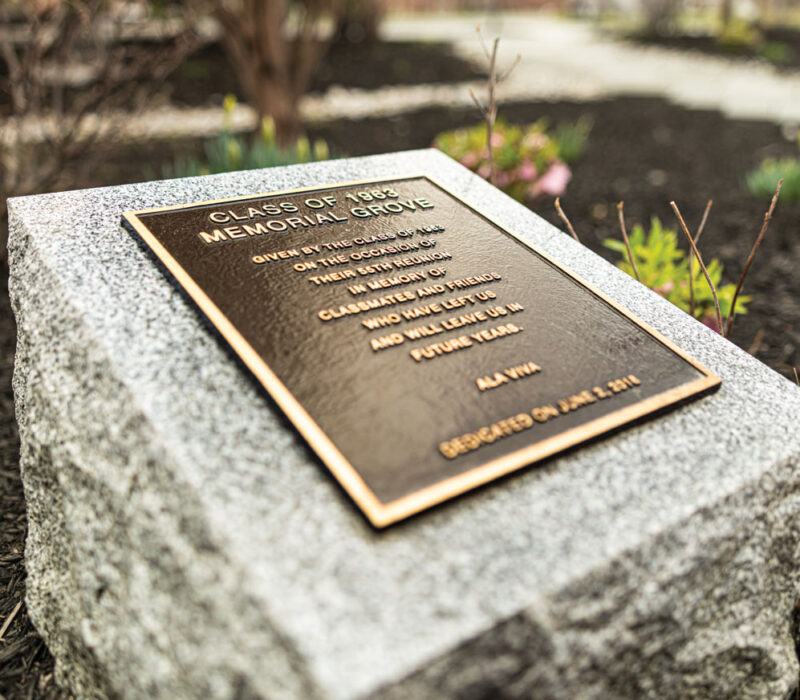

Geiger Reeves Hall
The Prop Stock
Two floors of this room house props and set dressing for Peddie’s mainstage, black-box and student productions. Items from housewares to suitcases to electronics and more are grouped together by era, allowing directors to make informed choices about how to bring their shows to life — no matter the time period.
Head-scratch moment: What’s with the weird layout and ramp? And why is the lower portion solid tile? Because the building was originally the school’s first gymnasium — and you’re standing in the pool.
Near Peddie Arts Center
Ward Burial Plot
Until Peddie broke ground on Swig (completed in 1989), this 22 x 11 x 4-foot mausoleum between Swig and Izzo Design Laboratory had been hidden under a leafy canopy for decades. Members of the Ward family, who, in the mid-19th century, farmed on what became the Peddie campus and for whom the street at the north end is named, are interred there. It reads “Opened 1794,” making it the oldest known structure on campus.
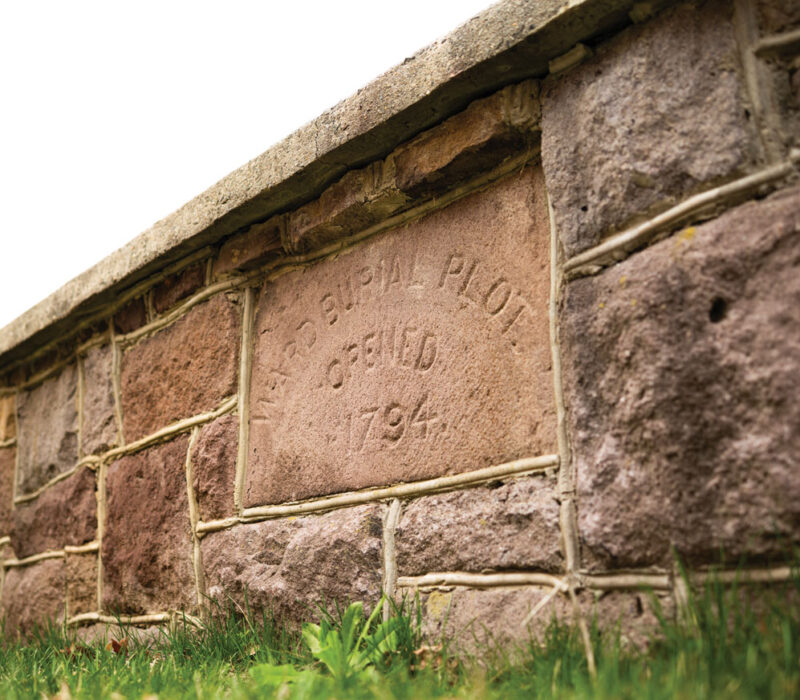
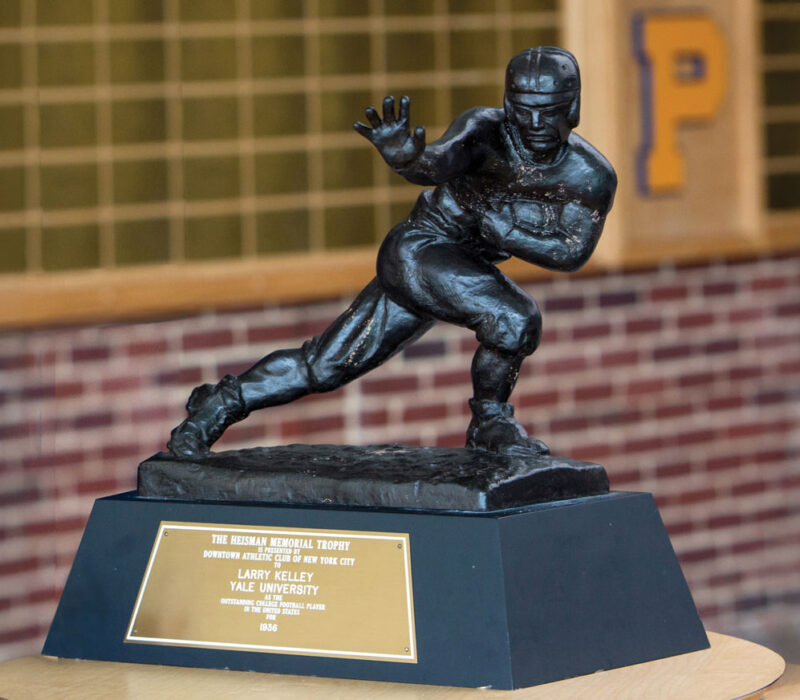
Ian H. Graham ’50 Athletic Center
A Heisman Trophy
An athlete at Peddie, Lawrence M. Kelley ’33 went on to Yale University, where he won the second-ever Heisman Trophy (awarded to the top football player in the United States) in 1936. Kelley later returned to Peddie to teach math, coach football and serve as alumni director. He donated the trophy to Peddie, where he said he came of age, in 1993.
Head-scratch moment: Real or replica? A little of both. Years later, Kelley requested a second Heisman to be made and gifted that one to Peddie. He eventually sold the original at auction.
Solar Field Behind Athletic Center
Goats
To trim and fertilize the grass on the solar panel field, Peddie’s Buildings and Grounds staff adopted a herd of goats. These grass-guzzlers (rather than gas-guzzlers) provide a natural way to keep the grounds tidy … and they’re very friendly, to boot.
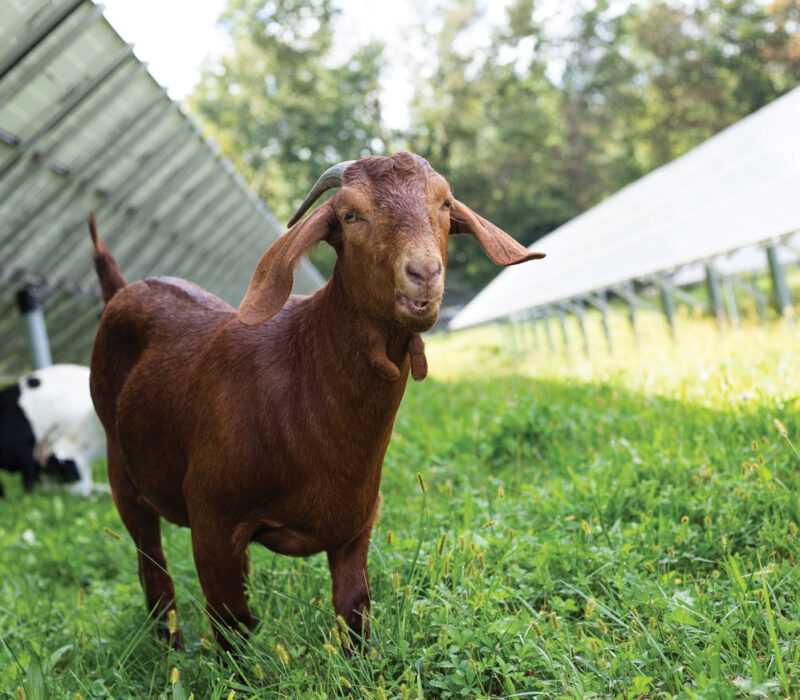
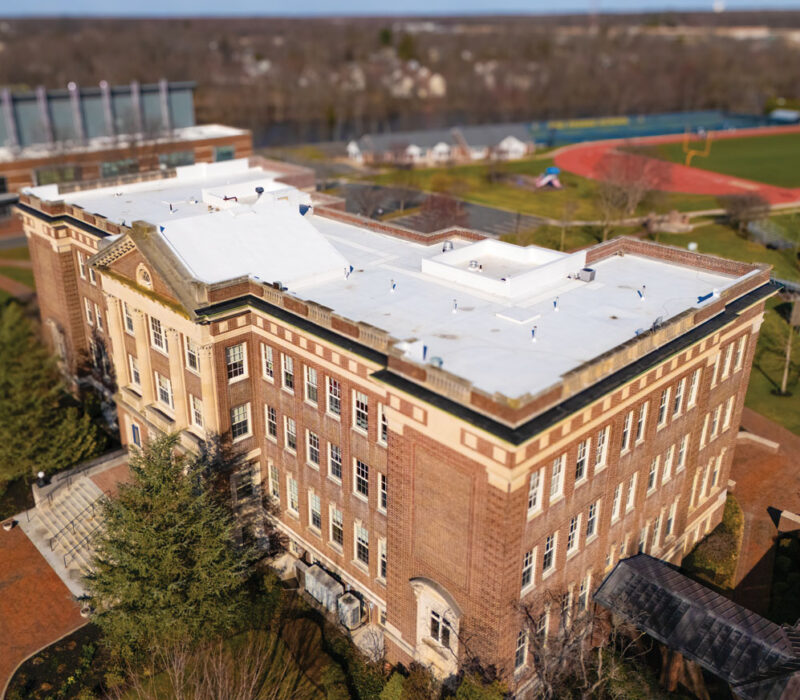
The Roof of Annenberg Hall
In 1941, as World War II raged on, the American Legion trained U.S. civilians to become lookouts for enemy aircraft. Annenberg Hall (then Memorial Hall), with its high, flat, wide roof, was Hightstown’s official 24/7 spotting post. Those on patrol took two-hour shifts and were required to report anything suspicious that they saw or heard. Volunteers who put on regulation field glasses and took the post included English teacher Clinton I. Sprout; Max and David Zaitz, whose family farm was in Hightstown; and Richard Hornberger ’41, who went on to become a surgeon and writer, most notably authoring the novel “M*A*S*H.”
Annenberg Hall
Head of School’s Office
The corner office features tall windows that offer a sweeping view of campus, a magnificent Art Deco wood and brass desk used by each head of school since at least Rev. Dr. Wilbour Saunders in 1935, and an intricately carved fireplace. One can’t help but imagine the evenings each of those eight heads of school spent by the fire, through lean years, through abundant years, contemplating Peddie’s past and making plans for its future.
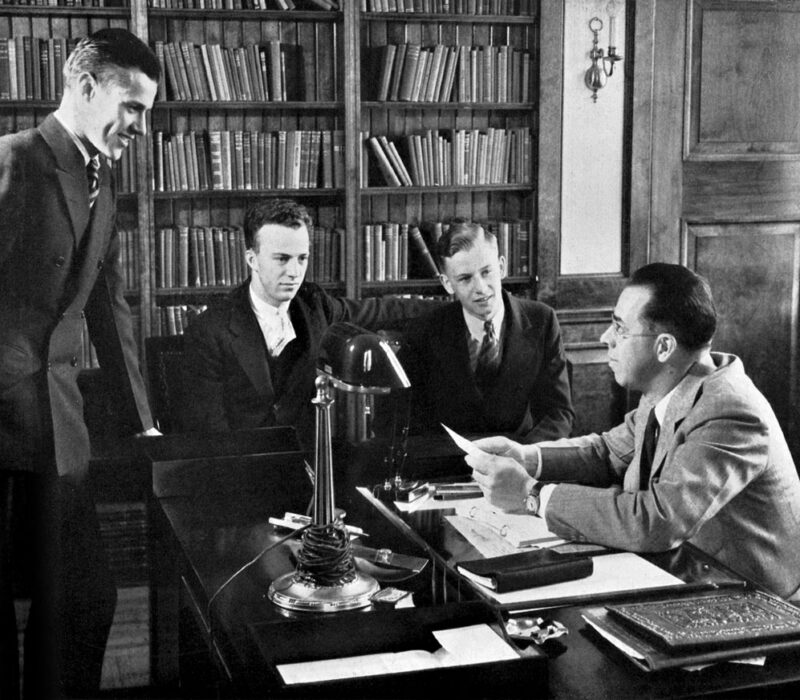
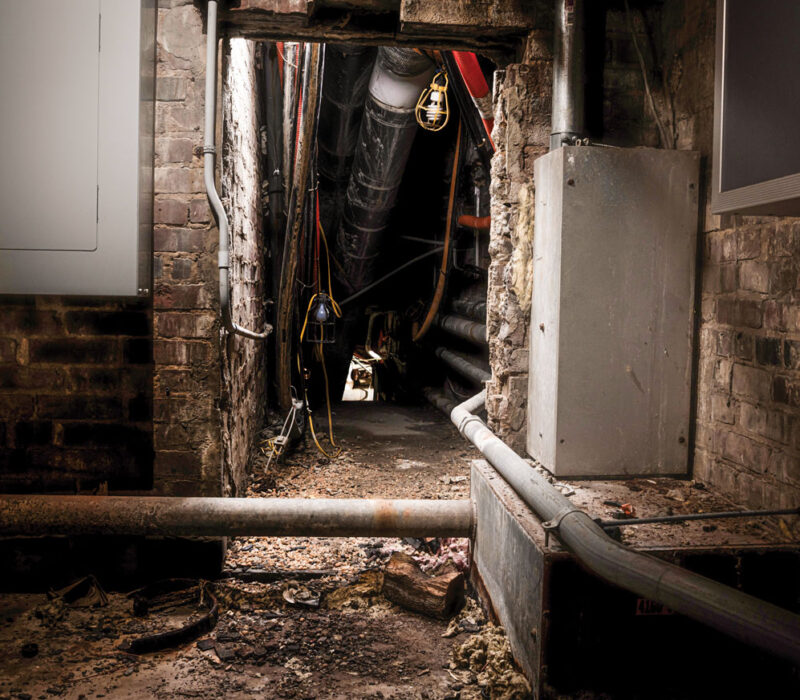
Below Annenberg Hall
The Tunnel
This low, dark and humid steampipe passage under Annenberg Hall leads several yards northeast to the former power house by Peddie Lake. Former teacher, coach and sports information coordinator Doug Mariboe ’69 P’10 ’14 grew up on Peddie’s campus in the 1950s and ’60s, and in the Spring/Summer 2022 Chronicle, he shared his memory of unlatching the door many times with fellow faculty kids and sneaking inside … until someone got wind of it. One fateful day, the giggling young explorers emerged at the end of the tunnel to find several sets of fuming parents. Thus ended the underground adventures, and today, the door remains locked.
Coates-Coleman House
The Archives
The room at the end of the hallway on the top floor is brimming with rarely-seen items that connect us to Peddie’s past. Established by the school’s first archivist, Carl Geiger, in the mid-20th century, the archives house a remarkable variety of historical photos, the school charter, a death mask of school savior Thomas B. Peddie and original letters from Head of School Saunders, written to alumni serving as World War II soldiers. Other curiosities include vintage Blair Day buttons, a Wilson Hall cornerstone brick and a hand-painted, mid-century megaphone.
